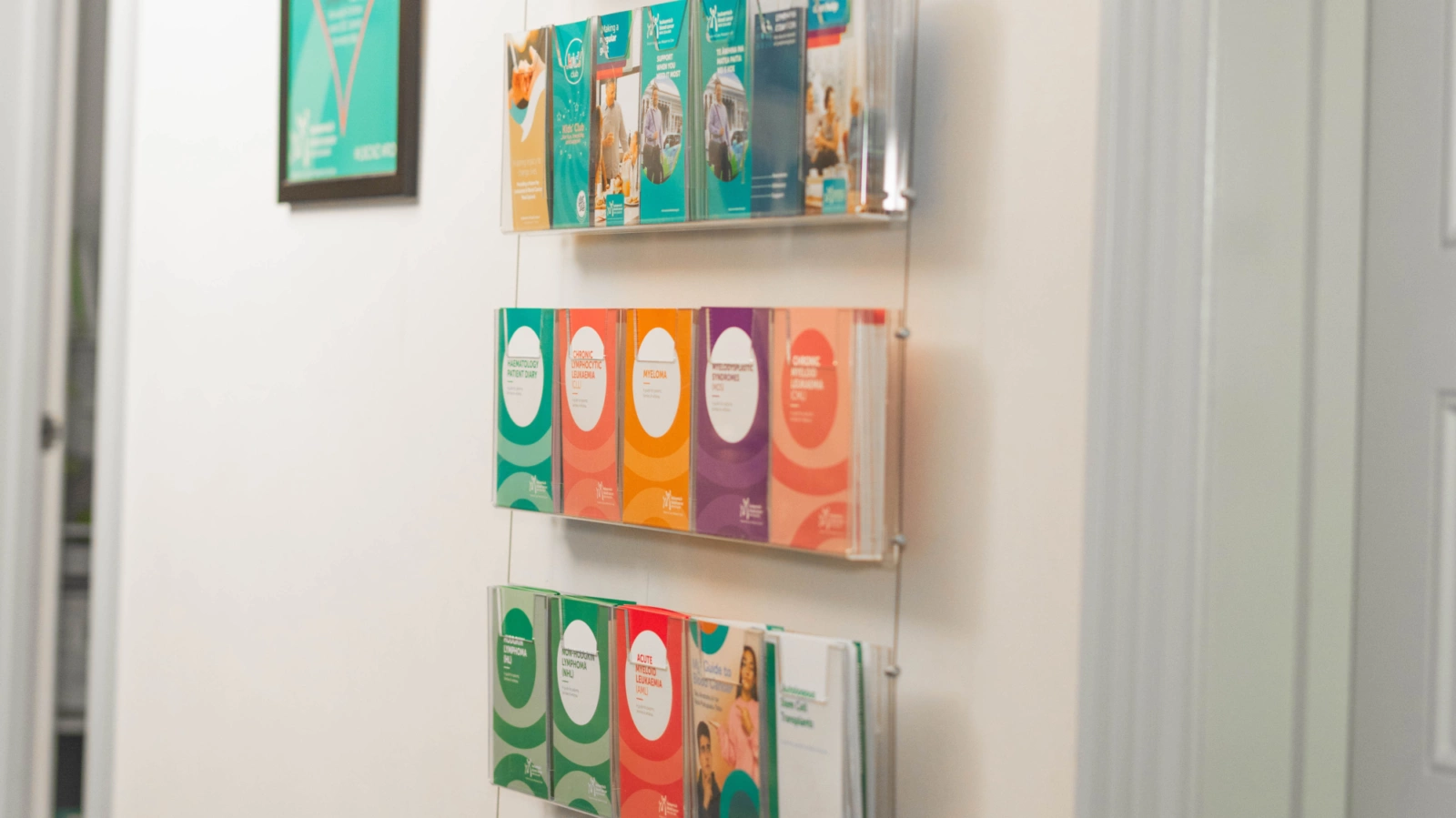What is leukaemia?
Leukaemia is the name given to a group of cancers that develop in the bone marrow. Under normal conditions, the bone marrow contains a small number of healthy immature blood cells (blast cells) which mature and develop into red blood cells, white blood cells and platelets, which are eventually released into the bloodstream.
Leukaemia originates in developing blood cells, which have undergone a malignant (cancerous) change. Instead of maturing properly, these cells grow and multiply in an uncontrolled way and interfere with normal blood cell production in the bone marrow. Most cases of leukaemia originate in developing white blood cells.
There are several different types and subtypes of leukaemia.
Acute/chronic
Leukaemia may be referred to as acute or chronic. These terms indicate how quickly the disease develops and progresses.
Acute leukaemia develops and progresses quickly and therefore needs to be treated as soon as it is diagnosed. It affects very immature blood cells, preventing them from maturing properly.
Chronic leukaemia results in an accumulation of more mature but abnormal white blood cells. It can occur at any age, but is more common in older adults and is rarely seen in children.
Myeloid/lymphoid
Leukaemia can also be either myeloid or lymphoid. The terms myeloid and lymphoid refer to the types of cell lineage in which the leukaemia first started.
When leukaemia starts somewhere in the myeloid cell line, it is called myeloid (myelocytic, myelogenous or granulocytic) leukaemia.
When leukaemia starts somewhere in the lymphoid cell line it is called lymphoblastic, lymphocytic, or lymphatic leukaemia.
The four main types of leukaemia are:
- Acute lymphoblastic leukaemia (ALL)
- Chronic lymphocytic leukaemia (CLL)
- Acute myeloid leukaemia (AML)
- Chronic myeloid leukaemia (CML)
Both adults and children can develop leukaemia but certain types are more common in different age groups. We have a separate information booklet about acute lymphoblastic leukaemia (ALL) in children.
Treatment
Treatment for leukaemia may involve one or more of the following:
- Active Monitoring
- Corticosteroids
- Chemotherapy
- Immunotherapy
- Targeted therapy
- Radiotherapy
- Stem cell transplant
Please see our Treatments section for more detail on treatment for leukaemia.




